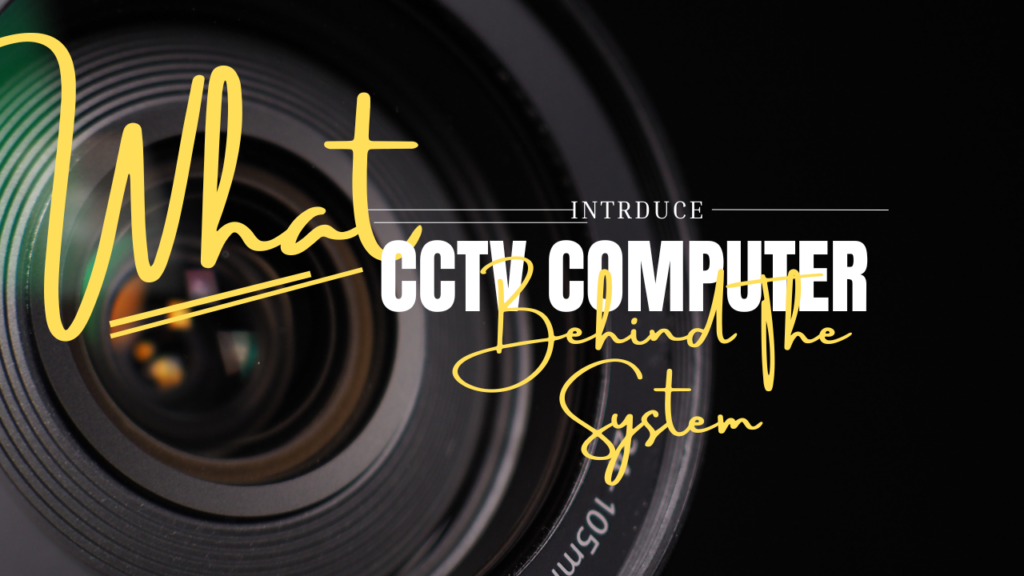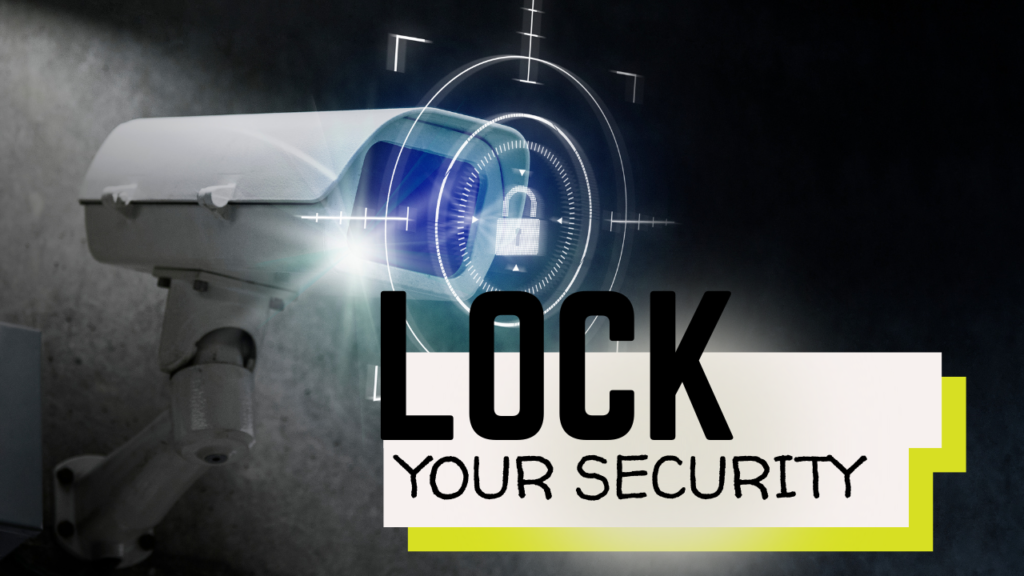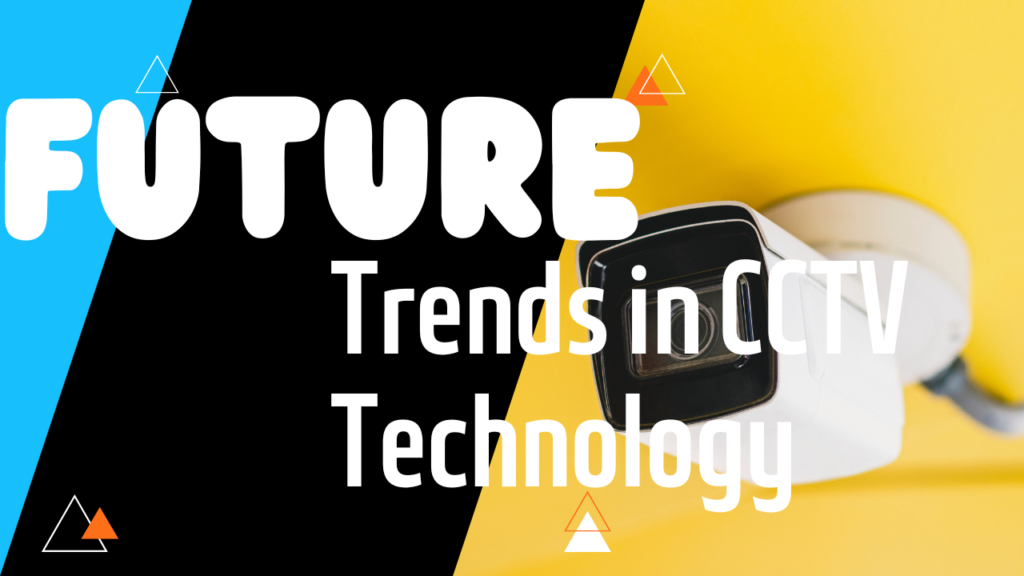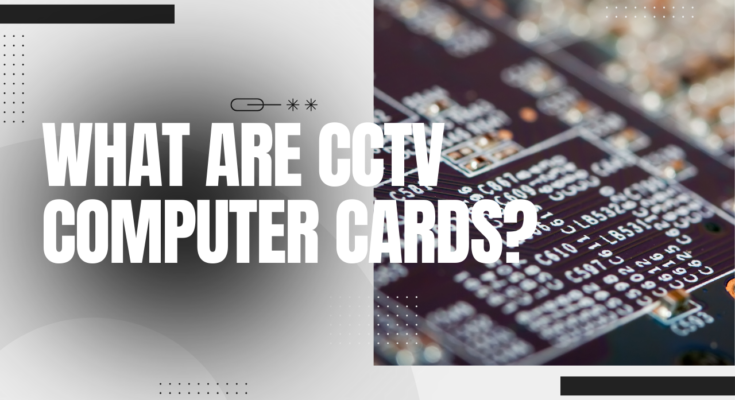What Are CCTV Computer Cards? Introducing the Brains Behind CCTV
Advances in technology have been facilitated by the creation of Closed-circuit television (CCTV) systems, which are essential for ensuring security in a variety of organizations. Technology keeps getting better, making things like surveillance cameras easier to use. Organizations depend on Closed-circuit television (CCTV) to keep places secure. Advances let CCTV systems record and save footage better than before and

Components of a CCTV System
Cameras, monitors, recording devices, and transmission systems make up a CCTV setup. Video is recorded by cameras and sent to recording devices for storage or monitors for live viewing. Systems for transmission might be wired or wireless. Storage space is saved by features like video analytics, motion detection, and remote access. Remote access enables users to see feeds from any location with an internet connection, while motion detection immediately begins recording when movement is detected. Advanced algorithms are used in video analytics to examine film and produce insightful results, such recognizing suspicious activity or calculating the number of persons in a certain region.
Importance of CCTV Systems
To help stop crime, observe a place in real-time, give evidence when incidents happen and assure inhabitants plus land owners. In the face of increasing security concerns however, reliability in surveillance technology is key. Through state-of-the-art features such as motion detection and facial recognition there has been an improvement in their effectiveness in deterring and investigating offenders. This occurrence is more frequent these days as it has become easier to merge CCTV systems with access control or alarm systems among other security components that can be installed commercially.
CCTV Computer Cards
The computer cards or CCTV cards are also called the DVR (Digital Video Recorder) cards or capture cards. They are devices that connect CCTV cameras to computers. These cards change the analog video signals from the cameras to digital format so that they can be saved and edited on computer hard drives. CCTV computer cards essentially turn regular PCs into powerful surveillance systems that can record and manage many camera feeds at the same time.
Types of CCTV Computer Cards
There’s all kinds of CCTV cards that work differently. Some common ones are PCI(Peripheral Component Interconnect) cards, PCIe (Peripheral Component Interconnect Express), and USB(Universal Serial Bus) capture devices. Every variety has distinct features and capabilities, like different numbers of cameras, video quality, and other operating system.
Types of CCTV Computer Cards
| Type of Card | Description | Typical Use Cases |
| Video Capture Card | Captures raw video data from analog or digital cameras. | Converting analog cameras to digital systems, adding more cameras to existing systems, recording video footage. |
| Video Decoder Card | Decodes compressed video streams from IP cameras. | Displaying live video from IP cameras, recording footage from IP cameras. |
| Multiplexer Card | Combines multiple video streams into a single stream for recording or display. | With single recorder, recording video from multiple cameras, and displaying live video. |
| Video Transcoder Card | Converts video streams between different formats or resolutions. | Recording video in different formats for archival or compatibility, streaming video at different resolutions for different viewers. |
| Video Analytics Card | Analyzes video streams for motion detection, object recognition, and other advanced features. | Triggering alarms, sending notifications, generating reports on activity. |
Advantages
CCTV cards provide various advantages over standard standalone DVR systems.
- CCTV cards provide flexibility and scalability, that allowing users to grow their monitoring system by normally increasing more cameras or upgrading hardware devices.
- CCTV cards provides remote access to live recording, and allowing for quite easy monitoring from anywhere with the internet connection.
Additionally, CCTV cards often offer advanced features such as motion detection, scheduled recording, and intelligent video analytics, enhancing overall security effectiveness.

Considerations Before Choosing CCTV Computer Cards
When you select CCTV cards for your computer system, consider the following factors:
Compatibility:
Make sure that these cares are compatible with the hardware and software infrastructure. Check for compatibility with operating systems, motherboard specifications, and camera types to avoid compatibility issues.
Budget:
Consider your budget constraints and choose CCTV cards that offer the best value for your investment. Explore highly featured and capable cards and priorities those cards, whose functionalities based on your surveillance requirements.
Features:
Evaluate the features and specifications of CCTV cards, such as video resolution support, frame rate, storage capacity, and connectivity options. To provide the desire level of performance and functionality choose that cards which is align with your specific surveillance.
How to Install CCTV Computer Cards
Installing of these cards requires basic technical knowledge and careful attention to detail. For installation follow all following steps one by one:
- shutdown the computer and disconnect all peripherals.
- Open the computer case and located all the available PCIe or PCI slots.
- Insert the CCTV card into the appropriate slot, and examine the secure fit.
- Connect the CCTV cameras to the card’s video inputs using compatible cables.
- On the computer and install the require drivers or software which is providing by the CCTV card.
- To start recording, by configure the software to recognize the CCTV camera.
Common Issues(Troubleshooting)with CCTV Cards:
Despite their reliability, CCTV cards may encounter occasional issues that require troubleshooting. Connectivity issue, hardware malfunctions, software conflicts are some common issues facing in CCTV cards. Refer to the manufacturer’s documentation for troubleshooting guidance and consider seeking professional assistance if necessary.
Future Trends in CCTV Technology
As we know that evolvement in technology day by day, similarly CCTV technology field is constantly evolving. hardware, software, and , AI driven advancement continuously. here some emerging future trends in CCTV technology:
- AI- powered video analytics integration for threat detection and behavior analysis.
- Enhance image clarity and detail, adopt 4K Ultra HD and Higher- Resolution Cameras.
- Expansion of cloud-based surveillance solutions for remote monitoring and storage.
- Development of smart CCTV systems with proactive monitoring capabilities and predictive analytics.

Maintenance Tips for CCTV Computer Cards
Regular maintenance is necessary to guarantee CCTV computer cards operate at their best and last a long time. To maintain the seamless operation of your surveillance system, adhere to following tips:
- Preventing from overheating keep your computer case dust free and clean.
- Enhance the compatibility and security of CCTV card, update drivers and software regularly.
- To increase the improvement in performance and reliability, apply the updated version which is provide by the manufacturer.
- Avoid the computer hardware failure or any fault check the whole system regularly , and resolve these type of problems as soon as they arise.
Conclusion:
CCTV computer cards are a big step up for surveillance tech. They blow old DVR systems out of the water with better flexibility, ability to scale up, and features. To take full advantage of these innovative solutions and upgrade your security the right way, you got to grasp the basics of CCTV systems and learn what purpose the cards serve. And figure out what to look for when picking cards to install so they work like a charm. By getting the lowdown on how CCTV and the cards operate what they bring to the table, and the key points for choosing and setting them up properly, you can leverage these next-gen offerings to seriously pump up your protection game.
FAQs:
What is the difference between DVR systems and CCTV computer cards?
DVR systems typically consist of standalone units with built-in recording capabilities, while CCTV computer cards interface with computers to digitize and process video feeds.
Can I use CCTV computer cards with existing CCTV cameras?
Yes, most of CCTV computer cards support a wide range of analog and IP cameras.
Do CCTV computer cards require additional software for recording and monitoring?
Yes, these cards typically come with accompanying software or drivers that enable users to configure recording settings, view live feeds, and manage surveillance footage.
Can CCTV computer cards be upgraded or expanded?
Some cards may support additional camera inputs or storage expansion options through hardware upgrades or software updates. For upgrade compatibility, check the manufacturer’s specification.

